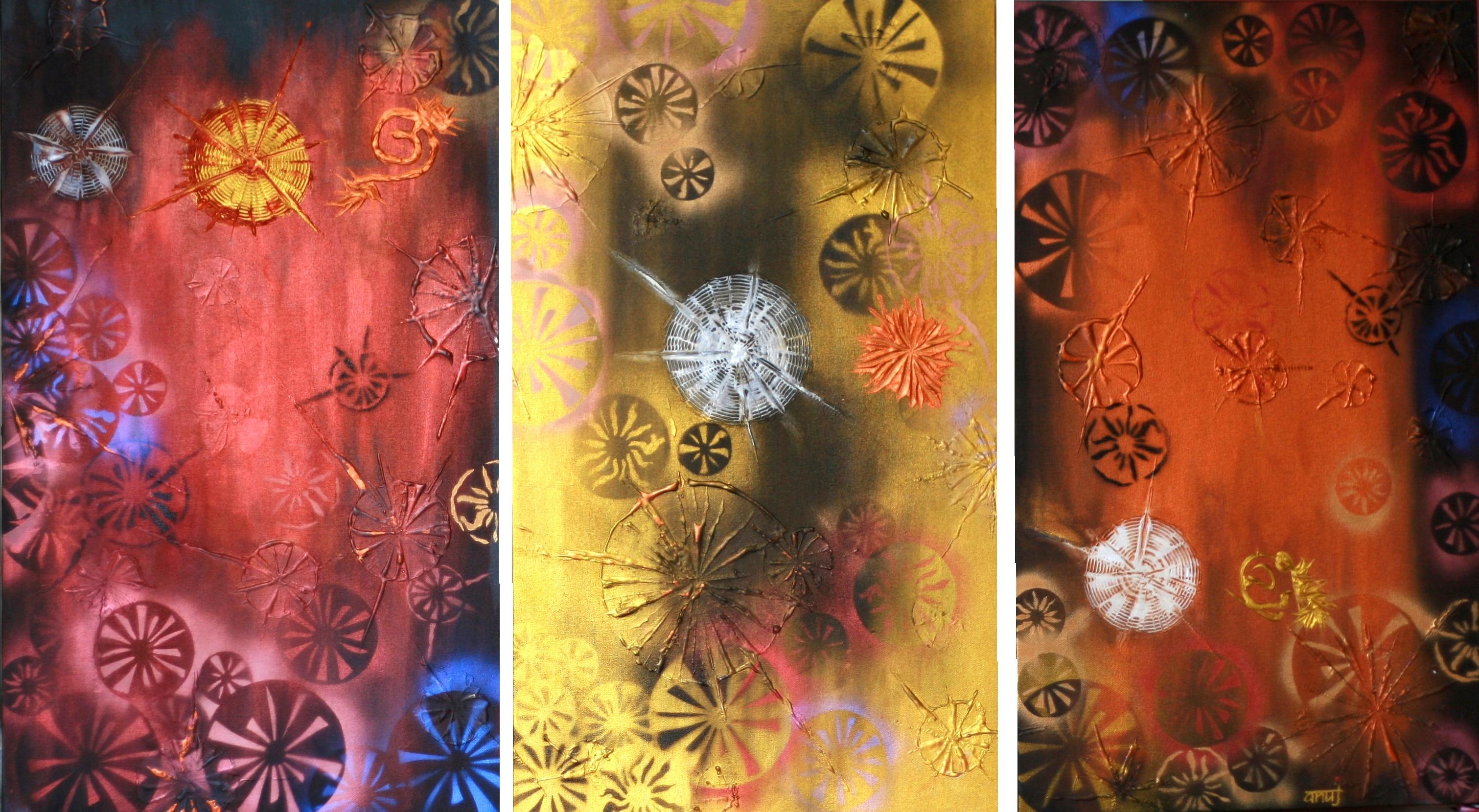
The last few decades have witnessed a steady rise in the number of Indian art collectors owing to the increased popularity as well as the accessibility of the art investment. At the same time, the Indian art world has been flourishing with the country’s expanding group of dealers, connoisseurs, gallerists, and collectors expending more conscious energy in collecting and investing in Indian artworks particularly classical Indian paintings.
Being a cauldron of cultures and religions, India offers a mesmerizing collection of exquisite and intricate artworks along with a wonderfully rich tradition of court paintings. Their raw appeal, uniqueness, aesthetic bliss, and cultural value make them highly sought after possessions in the art world. However, when it comes to acquiring these traditional Indian artworks, it is crucial that you learn to assess the artworks beyond their beauty.
To help you further, we have put together a comprehensive guide with five essential tips to help you build a collection of stunning art pieces.
As there are always new details to discover in traditional Indian paintings, you can start by learning about the different styles and schools of Indian painting using the good ol’ Google and exploring portals that sell art online which are a huge hit with young art collectors in India.
-
Explore The Schools Of Indian Painting
From the 16th to 20th centuries under the patronage of royal and princely rulers, a number of painting schools developed and flourished in the vast Indian subcontinent. Underpinning the country’s diversity, most of these schools recorded the passions, cultures, religious practices of the people, as well as recreations, courtly pomp, and ceremony of the Indian elites.
-
The Mughal schools
Best known for its fusion of Indo-Islamic culture, particularly from Persian traditions, and amazing commissioned creations illustrating popular Hindu epics and various Persian texts, several Mughal paintings also depict the impact of European Renaissance techniques, such as chiaroscuro for shading, as well as the use of Christian motifs, including cherubs.
Ruling a majority of north and central Indian states from the 16th to early 19th centuries, this art of the Imperial Mughal Court reached its pinnacle during the reigns of great Mughal emperors including Akbar, Jahangir. However, even during its twilight era it did not fail to make its mark in the Awadh region and fostered schools in the prominent cities of Lucknow, Faizabad, and Murshidabad.
-
The Deccani schools
Blending Persian influences with local art elements of mural painting, the paintings from the courts of the central Indian plateau ‘Deccan’ represent some of the most amazing artworks and quickly becoming popular among seasoned Indian art collectors. Not falling in line with the Mughals, the Islamic courts of Golconda, Bijapur, and Ahmadnagar developed a style of art of their own characterized by a tropical ambiance, suave and sophisticated forms, and silhouettes with striking color combinations.
However, after the absorption of local courts into the Mughal Empire in the mid-17th century, Deccani art acquired many elements of Mughal art. Hence, the strong semblances in the 18th-century artworks of the court of Hyderabad and the Mughal ateliers of the period.
-
The Rajput schools
Centered mainly in the famous Rajasthani towns of Jaipur, Jodhpur, and Udaipur, the Rajput schools began as early as the 12th century. Characterized by mysticism and religion, paintings of this school typically depict palace activity, hunting subjects, and religious as well as mythological themes, particularly from the life of Hindu deity Krishna.
As this school of art owes its existence to native Westaern Indian painting schools, Rajput paintings bear strong influences of Mughal art fused with local elements.
-
The Pahari schools
Like Rajput art, the rich painting tradition of Pahari art also drew from Mughal art. However, this art style is very much rooted in the Indian landscape with its favorite themes inspired by Hinduism. Characterized by soft fine lines, flowing pastel color schemes, complex architectural compositions, these paintings blossomed with grace and beauty. One of the most popular artistic genres today, Pahari paintings are included in the curated Indian art collection of almost every gallery and store that sells art online.
-
The South Indian schools
Independent of the Mughal painting style, this style of art started from the temple painting traditions practiced in the southern states of Mysore and Tanjore. Popular for their richly decorated religious icons and depiction of beloved gods and goddesses of Hinduism, these artworks are counted among the most exquisite creations of Indian art. Characterized by vivid color, glittering gold foils, elaborate gesso work, and glass inlay, these paintings are quite distinct from works of other Indian schools of paintings. Overlooked for a long, the South Indian schools are now coming to more prominence and grabbing the attention of seasoned Indian art collectors.
-
Gain Familiarity With The Subjects
With the subcontinent being so vast and expansive, a wide array of subject matter is depicted in Indian paintings. However, there are a number of recurring themes that are featured in the majority of paintings in one form or other, take time to peruse the classical Indian artworks to take note of those.
The most common subject of Indian paintings was Hindu mythologies. Paintings of every era and school, particularly in the South Indian school, produced illustrations of myths and folklore from the ancient Hindu epics. Thanks to the royal patronage of art, depictions of princely pleasures (royals indulging in hunting, music, and harem ambiances) were quite popular from the 16th to 19th centuries. The classical Mughal, Rajput, and Deccani paintings render many examples of the theme.
Apart from capturing the scenes from the lives of the royals, Indian masters also indulged in an array of different subject matter as well, such as naturalistic portraits of animals and flowers during the reign of Jahangir, depictions of different musical modes, or of the months of the year in the creations of Pahari schools. Several artists of the period also produced works featuring humorous, sarcastic, and grotesque subjects such as assemblies of drunken hermits, emaciated beats, or portraits of severely disfigured courtiers. Today, these artworks are highly sought after by Indian art collectors.
-
Enquire About The Condition
Spend time to know more about the condition of a piece, it will give you an added advantage when it comes to buying artwork. Is the painting in its original condition or has the work been altered? Have any portions of the painting surface been repainted or restored? Get into the habit of asking for reports elaborating on the condition of the paintings. These reports would equip you with the details that perhaps you had not given a thought over or maybe overlooked. Also, if possible, take time to inspect the piece physically.
Time and climatic conditions cause the inevitable deterioration of the artworks. So, it is crucial that you carefully examine the structure and current condition of the painting, check if it's laid down on a card? Or is there any paint loss, deformations, or any visible tears? As a collector, you need to determine your preferences and understand how tolerant you want to be of these affairs. For instance, awestruck with the beauty of the draughtsmanship, you might decide to overlook any issue with the physical condition of the painting.
-
Explore The Painting’s Back
Most often the owners, librarians, museums, and collectors put on their marks at the back of the painting, in the form of identification inscriptions, gallery labels, or maybe seal impressions. Hence, you can get hold of a wealth of information by spending time to look at the reverse of the painting.
Finding their origin in ancient times, classical Indian paintings may carry inscriptions in Persian, Sanskrit, or in some local dialects, you may not be familiar with. No doubt, deciphering these details could be quite challenging, but don’t be reluctant to invest time and effort to do so.
Also, don’t forget to examine the margins and borders of the paintings. Illuminated in gold, these are not elements of mere decoration but also carry important information on the artwork’s history. In the past, there were many paintings that were mounted on cards long after produced in different geographic regions, the margins will help you gain insight into the context of the work’s production.
-
Visit public institutions and auction houses
As with almost every kind of art, the more you see, the better insight you will gain into the schools and subject matters. So, try to visit artists’ studios, private collectors’ homes, exhibitions, auctions, and even far-flung galleries to explore the paintings in flesh. However, relying on images in reference works available on sites of museums, e-auctions, and stores selling art online is also a good way to get familiar with the art.
For studies on artists of the major schools of Indian painting, you can also read art-related books such as Masters of Indian Painting, edited by Milo C. Beach, Eberhard Fischer, and B. N. Goswamy (Zurich, 2011). A comprehensive survey of Indian painting, it also offers great introductory essays and can help you get a better understanding of Indian art.
Wrap Up
Remember that becoming an adept Indian art collector is a time-intensive process, learn about art on many different platforms, take time to see lots of exhibitions, and get to know artists. To delve deeper into Indian art, explore our curated collection by geographically diverse artists.





















